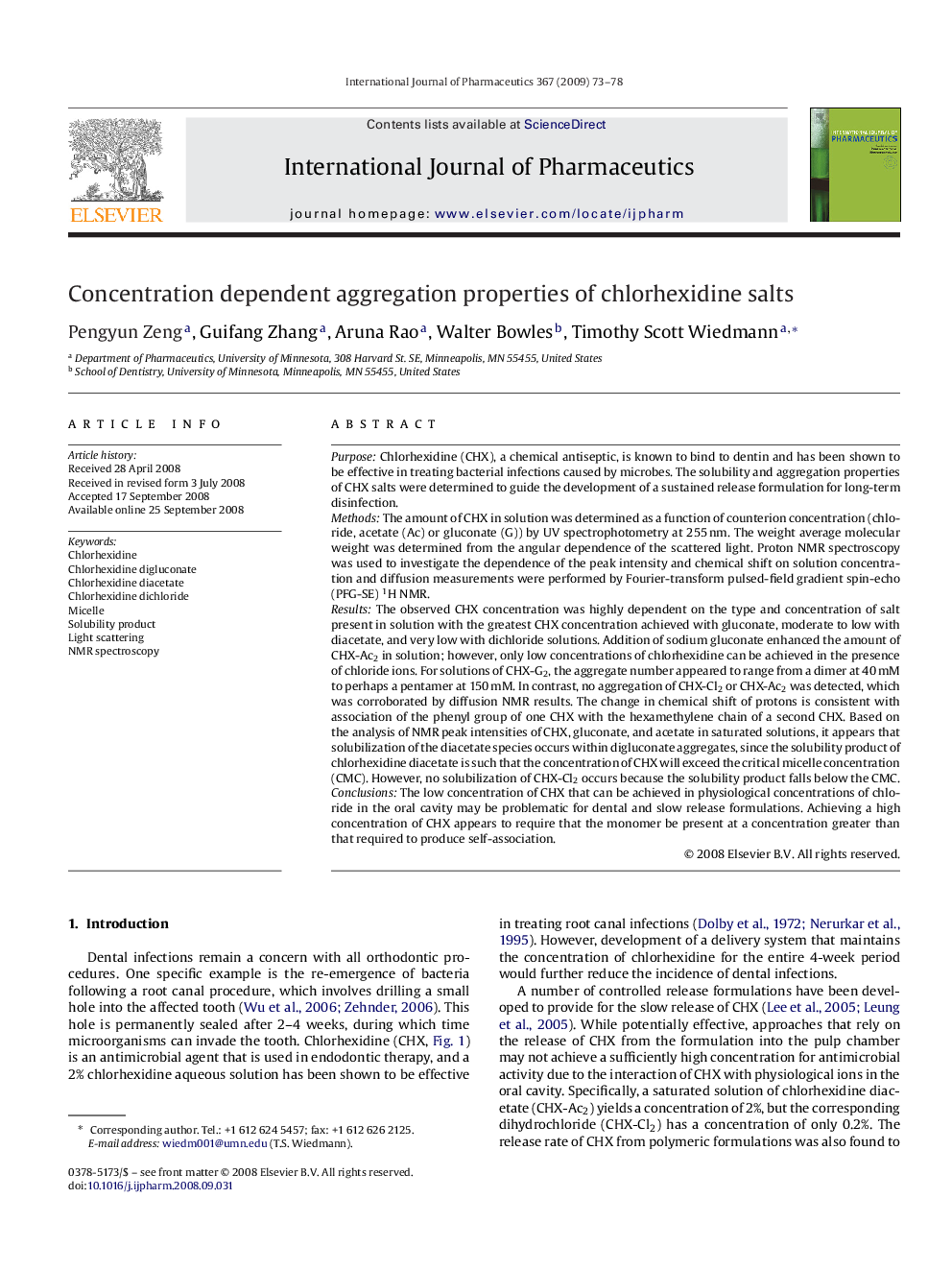| کد مقاله | کد نشریه | سال انتشار | مقاله انگلیسی | نسخه تمام متن |
|---|---|---|---|---|
| 2505010 | 1557478 | 2009 | 6 صفحه PDF | دانلود رایگان |

PurposeChlorhexidine (CHX), a chemical antiseptic, is known to bind to dentin and has been shown to be effective in treating bacterial infections caused by microbes. The solubility and aggregation properties of CHX salts were determined to guide the development of a sustained release formulation for long-term disinfection.MethodsThe amount of CHX in solution was determined as a function of counterion concentration (chloride, acetate (Ac) or gluconate (G)) by UV spectrophotometry at 255 nm. The weight average molecular weight was determined from the angular dependence of the scattered light. Proton NMR spectroscopy was used to investigate the dependence of the peak intensity and chemical shift on solution concentration and diffusion measurements were performed by Fourier-transform pulsed-field gradient spin-echo (PFG-SE) 1H NMR.ResultsThe observed CHX concentration was highly dependent on the type and concentration of salt present in solution with the greatest CHX concentration achieved with gluconate, moderate to low with diacetate, and very low with dichloride solutions. Addition of sodium gluconate enhanced the amount of CHX-Ac2 in solution; however, only low concentrations of chlorhexidine can be achieved in the presence of chloride ions. For solutions of CHX-G2, the aggregate number appeared to range from a dimer at 40 mM to perhaps a pentamer at 150 mM. In contrast, no aggregation of CHX-Cl2 or CHX-Ac2 was detected, which was corroborated by diffusion NMR results. The change in chemical shift of protons is consistent with association of the phenyl group of one CHX with the hexamethylene chain of a second CHX. Based on the analysis of NMR peak intensities of CHX, gluconate, and acetate in saturated solutions, it appears that solubilization of the diacetate species occurs within digluconate aggregates, since the solubility product of chlorhexidine diacetate is such that the concentration of CHX will exceed the critical micelle concentration (CMC). However, no solubilization of CHX-Cl2 occurs because the solubility product falls below the CMC.ConclusionsThe low concentration of CHX that can be achieved in physiological concentrations of chloride in the oral cavity may be problematic for dental and slow release formulations. Achieving a high concentration of CHX appears to require that the monomer be present at a concentration greater than that required to produce self-association.
Journal: International Journal of Pharmaceutics - Volume 367, Issues 1–2, 9 February 2009, Pages 73–78